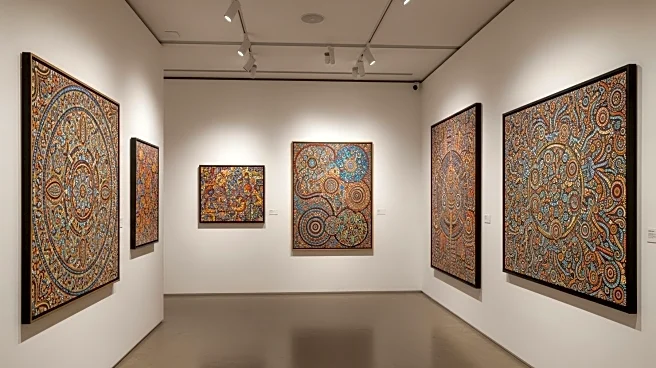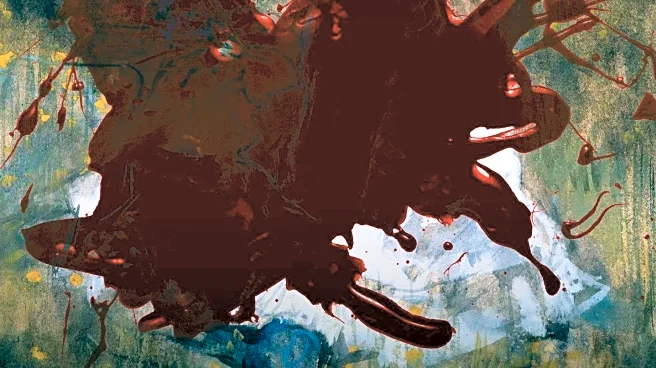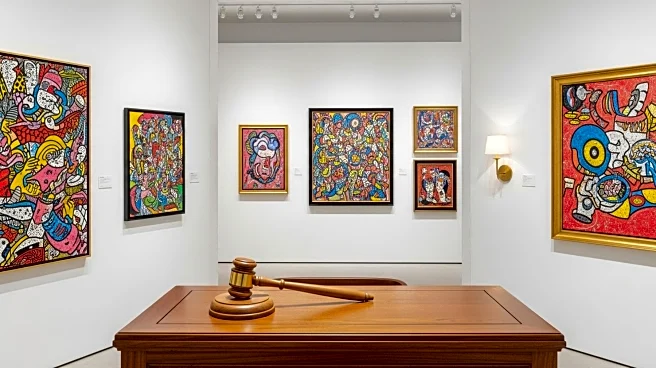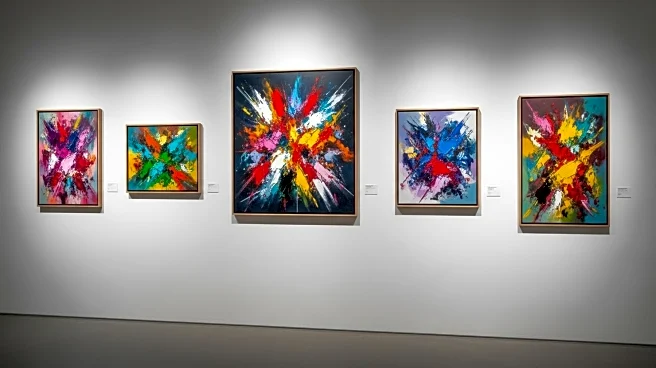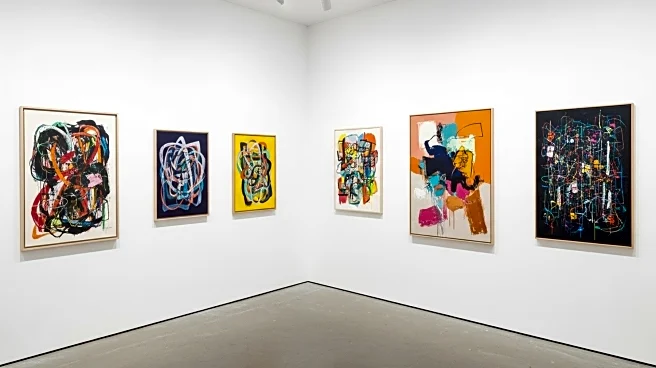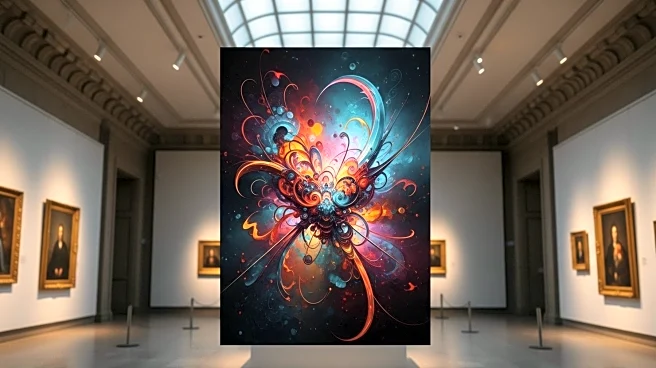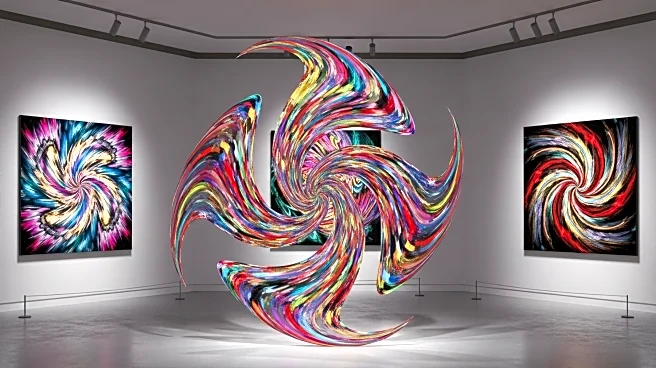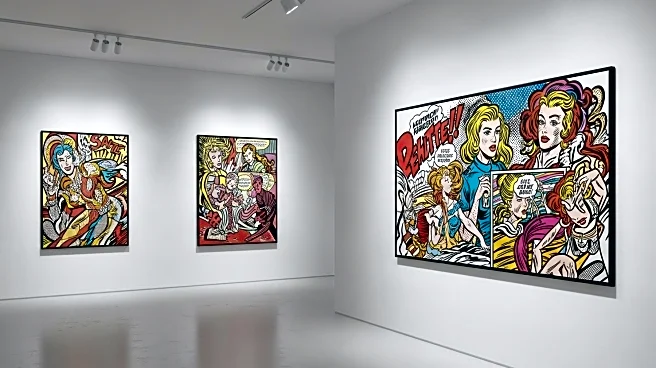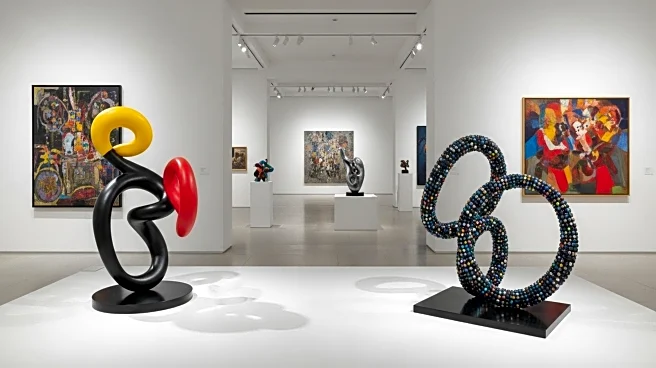What's Happening?
Rosalyn Drexler, a significant yet once obscure figure in the Pop art movement of the 1960s, passed away at the age of 98 in New York. Known for her vibrant paintings that explored themes of Hollywood actors, on-screen violence, and gender subversion, Drexler's work has gained widespread acclaim in recent years. Her paintings, which often utilized ready-made pictures and bright colors, were initially overlooked during the era dominated by Abstract Expressionism and Minimalism. Drexler also had a career as a writer, penning novels and plays that shared the quirky and biographical elements of her paintings. Her work has been increasingly recognized and collected by major U.S. institutions, including the Museum of Modern Art and the Whitney Museum.
Why It's Important?
Drexler's recognition highlights the evolving appreciation of Pop art and its diverse contributors. Her work challenges traditional narratives by incorporating commercial imagery and addressing media-induced violence against women. The renewed interest in her paintings reflects a broader reappraisal of the Pop art movement, expanding its canon to include artists who were previously marginalized. This shift not only enriches the understanding of art history but also underscores the importance of revisiting and valuing diverse artistic voices. Drexler's legacy serves as a reminder of the dynamic interplay between art, culture, and societal issues, influencing contemporary discussions on gender and media representation.
Beyond the Headlines
Drexler's work, once a 'secret kind of thing,' now plays a crucial role in redefining the Pop art narrative. Her paintings, which defamiliarize recognizable images, invite viewers to reconsider the impact of media and advertising on societal perceptions. The late recognition of her contributions also raises questions about the historical biases in art valuation and the need for inclusive representation in cultural institutions.


